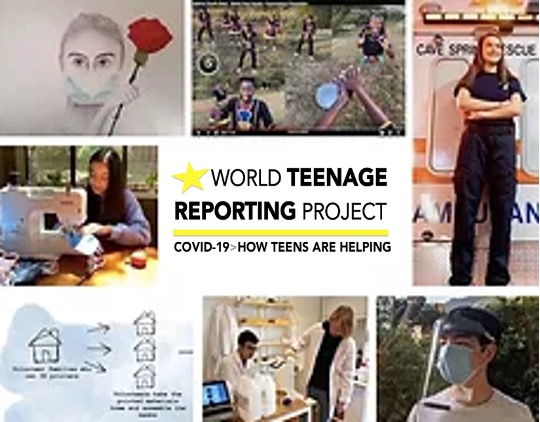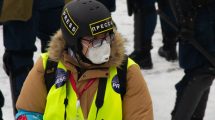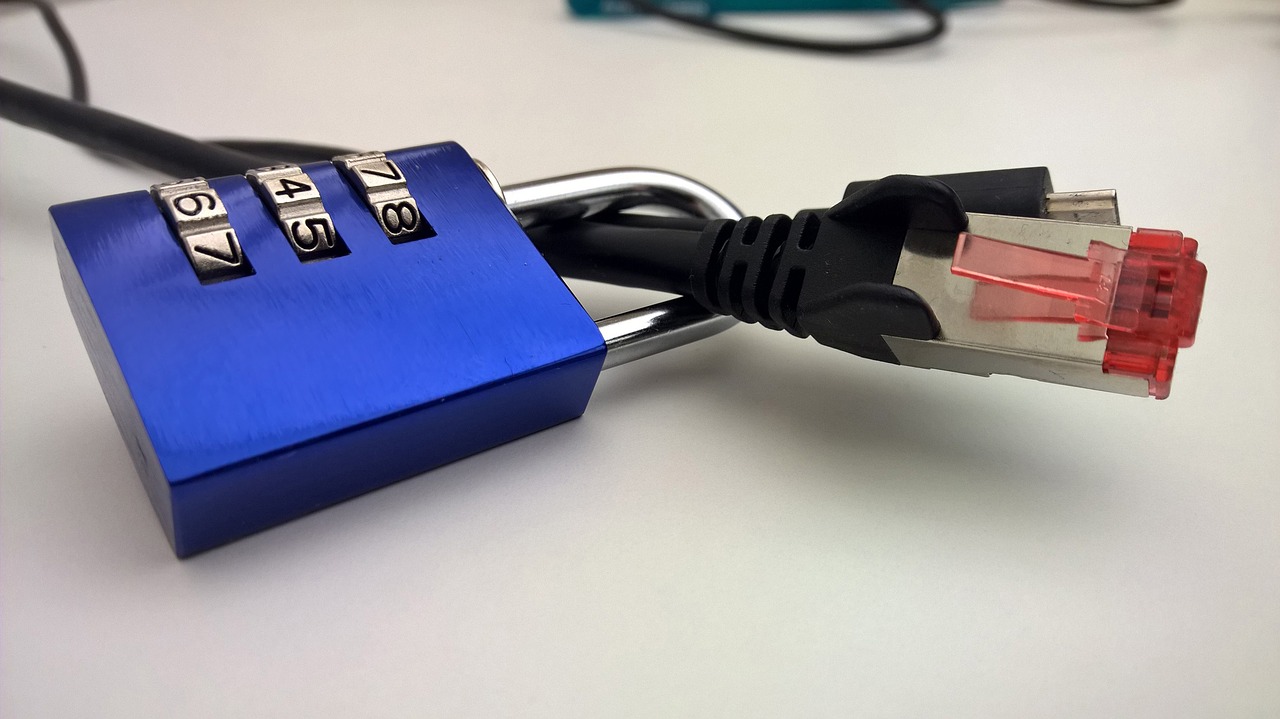With humanity transitioning to a new era – post COVID-19 – it is crucial to empower and involve youth, making them an active part of such transition. For the World Teenage Reporting Project>COVID 19, teenage journalists in 19 countries covered 60 of the untold stories about how their peers were helping during the pandemic. The project demonstrates the power of youth in connecting societies while having an active role in times of crises. It was organized by Global Youth & News Media, a French nonprofit directed by Dr. Aralynn Abare McMane.
Aralynn Abare McMane, founding director of Global Youth & News Media, is based in France and has worked in about 75 countries to persuade news media to pay better attention to young people and to help them understand journalism. She has been a reporter and editor, a journalism educator and researcher, and a media development program leader. In this interview, McMane talks to us about the details and impact of the project.
The World Teenage Reporting Project presents an interesting proactive approach to covering stories from around the world during the pandemic. What prompted you to do this?
Three things, actually: capacity, an inspirational model and getting annoyed.
I was bugged by what seemed to be the prevailing image of teenagers and twenty-somethings as either careless beach-goers who were bringing the virus home to Grandma or powerless kids stuck at home whining about their boredom. Later they got some sympathy for missing teenage milestones, but they were still portrayed as mostly useless.
Also, I had the capacity to organize the project because I decided to postpone the 2020 Global Youth & News Media Prize competition, which I run with Jo Weir of London, to 2021.That provided some spare time to do something new (from confinement like everybody else).
Meanwhile, in the course of writing a story about what editors of news for children were doing around the epidemic, I came across a lot of examples of testimonials from children and teenagers about how it was going for them in confinement. PBS NewsHour Student Reporting Labs did that as well but also provided tools for teenagers to go beyond their own experience and do real journalism. That made me realize what I could do as I had previously organized global youth journalism projects around interviewing inspirational people and taking over newsrooms for a day. Also, I knew that stories about helpers contributing to the solutions of a situation give hope about that situation.
I simply combined it all. Don’t get me wrong. Testimonials about confinement are useful as is the tough news we continue to need to face about this virus, but I think it’s important to hear also, loud and clear, about how young people are contributing.

Why ask the teenage journalists to tell stories about someone else and not about their personal experience?
Doing a story about someone else is real reporting, a harder, more powerful activity that really teaches about how content created with a journalistic approach is different from other kinds of content. It takes a higher level of paying attention. It’s also a learning exercise, as all partner organizations had professional editors or mentors on hand to help.
Tell us about the process of recruiting teenagers to become part of the project and the role of the different partners involved to facilitate the development of the project.
It wasn’t complicated. I first contacted people around the world who I know already and who worked with teenage journalists. They were quick to join so I was reassured that the project made sense. It just grew organically from there. The partners were simply people who had direct contact with teenage reporters. I ended up working with a few teenagers myself, but the success of the operation depended fully on those editors and advisers who had fully dedicated themselves to helping young peoplelearn how to do professional reporting.
Did you have selection criteria, and how were the selected young reporters prepared; were they given training?
My selection criteria were basically, “Yes.” All I needed to know was that teenage news organizations understood the mandate: stories about how other teenagers were making a difference. They already knew the job. I was not there to edit. I was there to amplify. I understand that this is a very different approach from a more elaborate program that would involve journalistic training because I have also done that. In this case, that was not the goal.
Why did you think it would work?
I’ve done some other global projects around news media and young people and found that both young people and their adult mentors respond well.
While at the World Association of Newspapers and News Publishers, I did a World Teenage News Takeover that encouraged newsrooms to turn over part of the news or commentary to teenagers (not a special section; the normal content), and a My Dream Interview Festival that encouraged teams to prepare interviews for adults they admired. Materials for doing both are still online and still viable, I think.
I have consistently found that the news staff who do that kind of work with young people are always ready to try something new, especially when it can be global and give them some fresh insights and approaches.
What was the risk and what were the challenges you faced during the different phases of the project?
I was worried that it would be considered too hard so nobody would do it. Once I began to contact people who I knew cared both about journalism and young people, I was reassured by the enthusiastic response. Frankly, it went very smoothly from there, with me just coordinating, doing showcases of the work and social media promotion to make their stories better known. I’m especially grateful to the New York Times Learning Network, whose promotion for the project as part of their annual podcast competition yielded some great content that would never have otherwise emerged.
Besides the COVID-19 pandemic, we are also suffering from an ‘infodemic’ with the spread of false information and misleading conspiracy theories. How far do you think this project helps in promoting awareness, quality journalism and in reinforcing Media and News Literacy among youth?
I have long believed and strongly advocated the stance that doing journalism is a very powerful tool for reinforcing media and news literacy. Once you have been in the position of a reporter, having to decide what is real and verifiable enough to share with an audience, you never really look at “information” the same way. It’s not about becoming a cynic about all content. It’s about learning to always check the source of the original “information” and then look at multiple other sources, preferably primary sources, to confirm or discredit what you originally thought was true. [Learning about journalism is also reinforced by learning about the horrific price some people have paid just to do that job, but that’s another discussion.]
This project was also about validating a solutions journalism approach — looking at how covering the helpers can be useful in counteracting a stereotype and finding ways to solve the problem at hand.
Can you describe the actual impact this experience had on the participating teenagers on the different levels; personal, social, educational? Do you think such experiences help youth to cope better with challenging situations like the one we are all currently living?
It’s pretty standard psychology that if you can contribute during a crisis, you’ll be in better condition than people who can’t do so. I also heard from some of the advisors to the teen journalists in the project who said much the same thing. For example, Melissa Falkowski advisor at The Eagle Eye in Parkland, Florida (USA), where 17 students and staff were gunned down in 2018, was the first on board for the project. She told me that “for student journalists that are stuck at home, this project gives them something to do. In my experience with trauma, having something to do and the ability to write about stories related to the trauma you have experienced or are experiencing can be very healing.”
Is there going to be another part for this project in the future?
This will sound contradictory, so please bear with me: In some ways, this was a unique, “unicorn” project, but I think there is potential for another edition. Rarely in human history has the whole planet experienced the same phenomenon and, at the same time, had the capacity to report about it. That was the case here. COVID-19 was everywhere. Teenagers everywhere — both journalists and protagonists — had few distractions as schools were either closed or on reduced, online schedules. That made it a truly unique time. But I think there may be a reason to do another edition. I am exploring doing it again, possibly around inspirational change makers, but this time I need a partner, and there may be a strong argument for some training. Also, I want to explore with someone a way to use the stories in the COVID-19 edition [and any further edition] as a classroom resource. Not an easy assignment.
___________________________________________________________________________________
GLOBAL YOUTH & NEWS MEDIA
> Organizes international initiatives to advance the interaction of youth and news media, most recently the World Teenage Reporting Project > COVID-19.> Awards an annual Prize in partnership with The European Journalism Center, News-Decoder, and The Google News Initiative












Add Comment